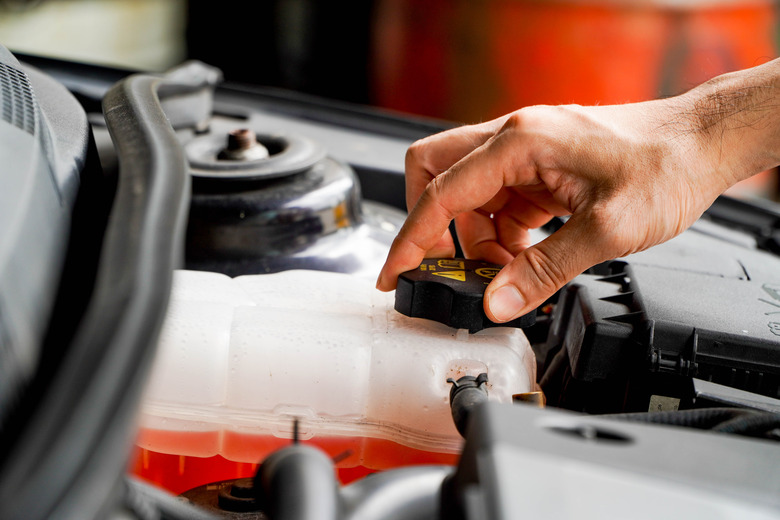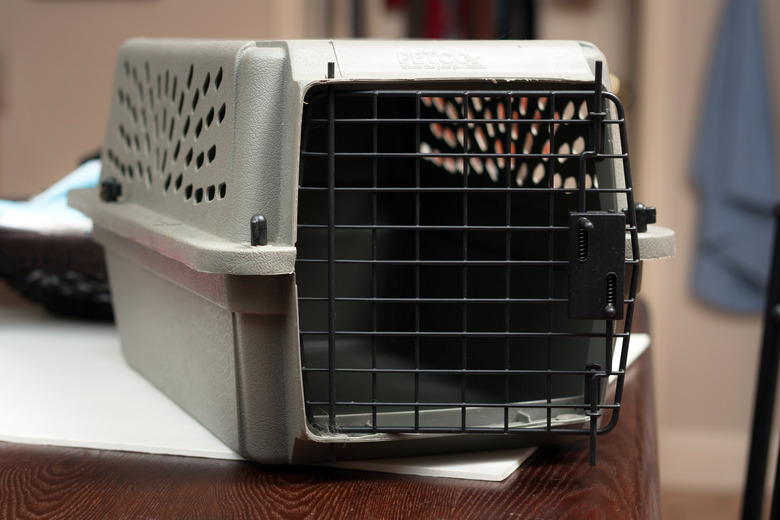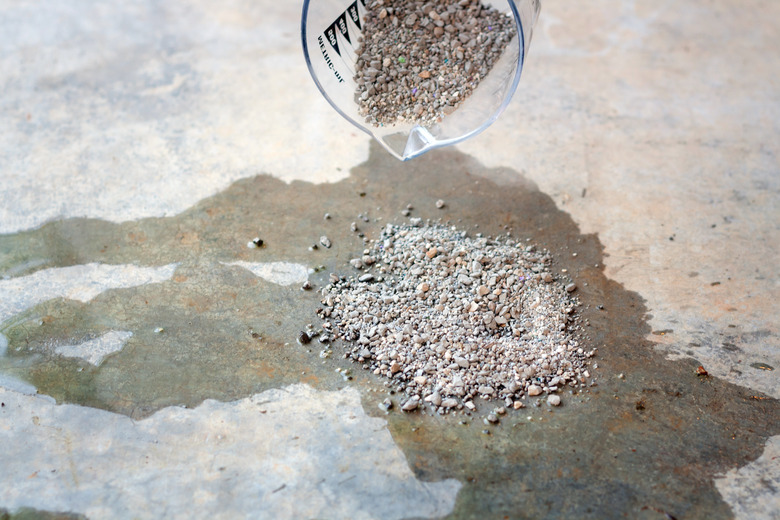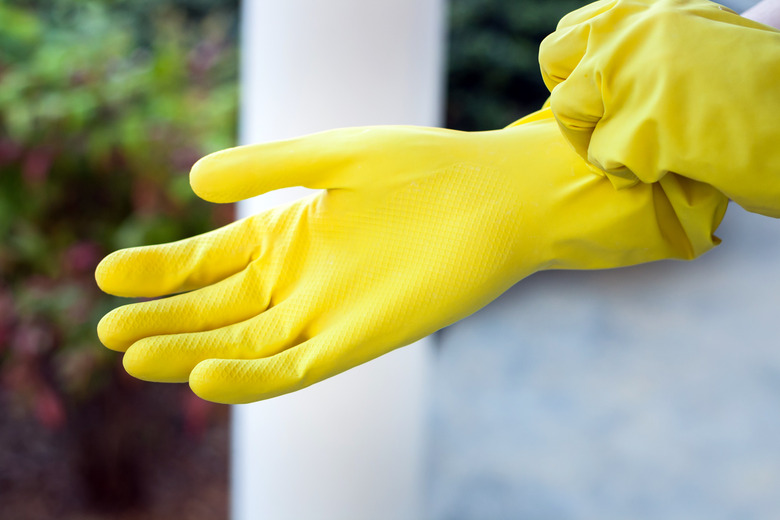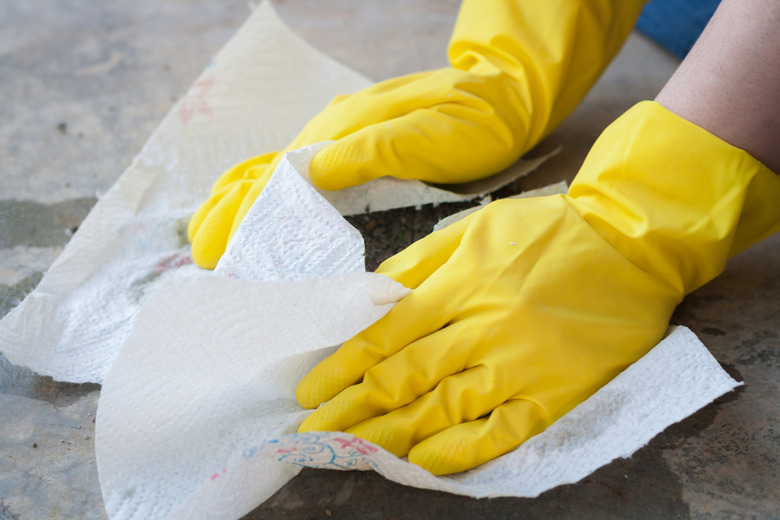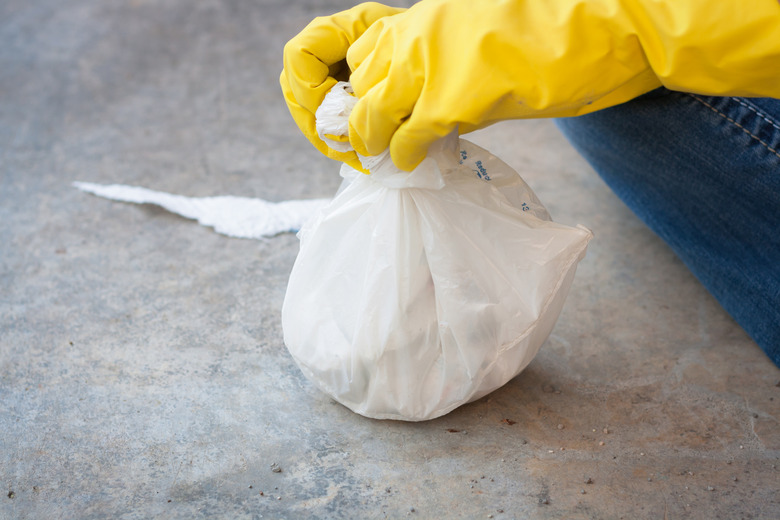How To Clean Spilled Antifreeze
We may receive a commission on purchases made from links.
Puddles of spilled antifreeze are harmful to groundwater and potentially fatal to people and — especially — household pets. There are two types of antifreeze: the greenish-yellow ethylene glycol type, which has a sweet flavor and is toxic when ingested, and the pink or orange propylene glycol variety, which is somewhat less poisonous. If you spill either type in your garage or home or on your driveway or patio, clean it up promptly.
Things Needed
-
Kitty litter or sand
-
Soap
How To Clean Antifreeze Spills
1. Keep Pets Away
Keep your pets away from the area of the spill until it has been fully cleaned. Never let your pet ingest antifreeze or other household material.
2. Use Absorbent Material
Pour kitty litter, sawdust. baking soda or other absorbent material on the spill immediately. Allow the material to absorb as much of the antifreeze as possible. Layer paper towels or newspaper above the absorbent material to keep the antifreeze from spreading. Make sure you add enough layers that all of the spill will be absorbed by the kitty litter. Then, let the area rest for one to three hours, giving the absorbent material time to soak up all the antifreeze. In the meantime, make sure no animals can enter the area.
3. Pick Up Absorbent Material
Slip on a pair of rubber gloves. Antifreeze can be absorbed through the skin and cause damage to internal organs. Pick up and discard the absorbent material using dry paper towels.
4. Clean the Spill Area
Clean the spill area vigorously using soap and warm water. If the spill is in the garage or outdoors, you can hose the remaining suds and water into your lawn. Rinsing it into the lawn allows the soil to filter the toxins before they reach groundwater. If it's on your driveway, do not hose the solution into the street because it will end up in the storm drain system and ultimately pollute natural waterways. If the spill is indoors, sop it up with paper towels and discard them into a sealed plastic bag. Do not rinse the water and suds down the drain.
If there is still a stain, you may have to repeat the cleaning process until the stain is gone.
5. Dispose of the Antifreeze
Immediately secure the used paper towels and absorbent material where it won't be disturbed by animals until it can be picked up with the rest of your trash. However, make sure your trash cannot be penetrated by your pets or any other animals. You can also check with your local or state government for nearby hazardous waste disposal centers and take it to one that will accept antifreeze waste.
Tip
Rinsing antifreeze or liquids tainted with antifreeze down the drain is illegal in many communities.
Though labeled nontoxic, propylene glycol antifreeze is simply less toxic. Animals can still become sick if they drank sufficient quantities.
Warning
As little as 1 teaspoon of antifreeze can cause irreversible damage to a cat's or dog's liver and other internal organs.
If any human or pet ingests antifreeze, seek immediate medical attention for that person or animal.
